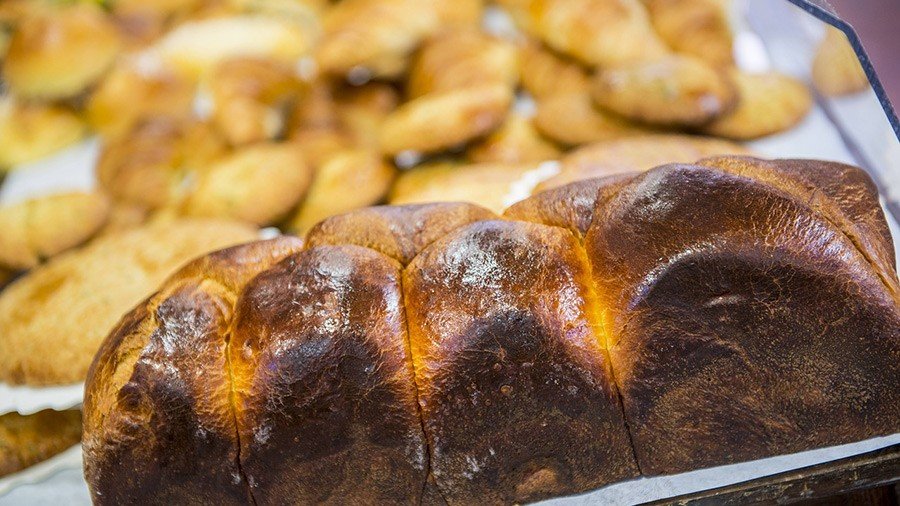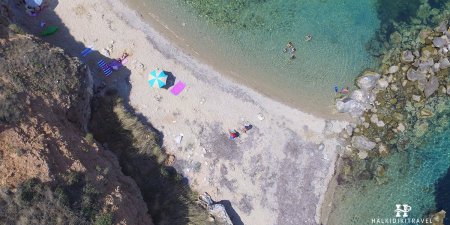
Halkidiki is a place which is rich in traditional customs. Many areas of Halkidiki have their own traditions, that have their roots in previous centuries. In this Blog post, you will learn some customs of Easter and New Year, as well as some other known customs, that people still keep and carry to the next generations.
New Year's Eve customs:
The custom of vassilopita:
Vassilopita is made all over the country, with variations. In Halkidiki, the materials to make vassilopita, differ from village to village. Usually, it is a sugar bread, sweet brioche. Other housewives made the vassilopita with the same dough that they made the buns. In Nikiti they made rice pie and in Galatista they made the "tsigiropita". They made them with the jelly of the pig and rice. All the vassilopitas had a "flurry". "Flurry" is a lucky coin. In many places, they put other symbols on the pie, depending on some wish they wanted to be fulfilled, such as: an olive tree, wheatgrass, etc. In the "tsigiropita" they put a cross of olive spruces instead of "flurry".
The carols in Polygyros:
On New Year's Eve, young people from the village went door to door to sing the carols. They decided who would be their leader, who would do Santa. They dressed in traditional capes, put white hair on their heads, took the "glitz"(a piece of wood) in their hand, and disguised as shepherds, went to sing the carols.
Easter customs:
Easter in Arnea:
There is a variety of Easter customs that revive in Arnaia. On the first day, young people of the village gather in the square, they dress in traditional costumes, and they give greek sweet bread, red eggs and pies to the world.
The second day they have the custom of "kantari". In the square of Arnea, there is a hanging "kantari", and they all go there to be weighed. It's a custom to see who ate the most at the Easter. Those who have the most weight get a prize of a pot. On the same day at the square, there are swings that everyone goes and the women sing traditional Easter songs.
On the third day "Koutsamos" custom revives. At 8 o'clock men with traditional uniforms and armed are gathered with horses in Arnea Square. While they're singing, they go to the Prophet Elias church, outside the village and after the ceremony, shooting with red eggs as targets begins.
The burning of Judah:
At Gomati on the Holy Saturday, in the village square they set up a torch and hang Judah from the top. At midnight and when the priest says "Christ is Risen" they light the torch to burn Judah. The same custom is revived in Hanioti, Pefkohori, Galarino, Megali Panagia and Neos Marmaras.
Horse Racing:
Another special custom is horse-racing. Organized on the third day of Easter, on the beach of Sykia in Halkidiki. After the ceremony, the priest gives the horsemen the image and they carry it from the church, to the place where the horsemans will be held.
'Of Khar' kou t' aloni 'and the ' Black Aloni ':
In Palaiochori revives the custom of "Of Khar' kou t' aloni ". In the old temple of Archangel Michael there is a ceremony and then a great feast. Dance and custom is called "T khalkou T' aloni" and refers to the slaughter of the inhabitants of Paleochori. The same custom is made in Ierissos and is called "Black Aloni".
Other known customs:
The custom of Klidona:
On the eve of Ai-Gianni feast, the single girls of the village, gather in a house. One of them, goes to the well to bring the "silent water". On the way to the house, she shouldn't talk to anyone. At home they put the water in a clay pot, in which each girl throws a personal object. Then they cover the container with a red cloth, tie it and leave it in an open space. It stays all night under the light of the stars and it is said that the girls will see their future husbands in their sleep.
Also, on the eve of Ai-Gianni, the famous custom of fire is also happening. In the square of the village there are fires set on top of which all the inhabitants of the village jump. According to the tradition, fire, helps purification, and people are relieved of evil.
These were some traditional customs of different regions of Halkidiki. They are traditions that keep alive the cultural heritage of the place. It is worth to visit these areas and to experience the reviving history, through these customs.
